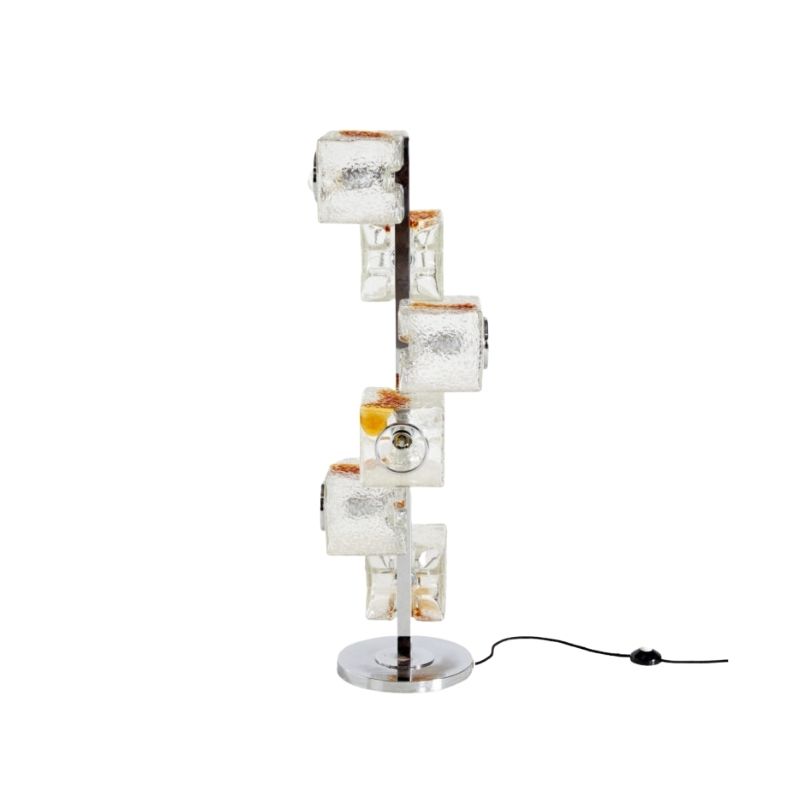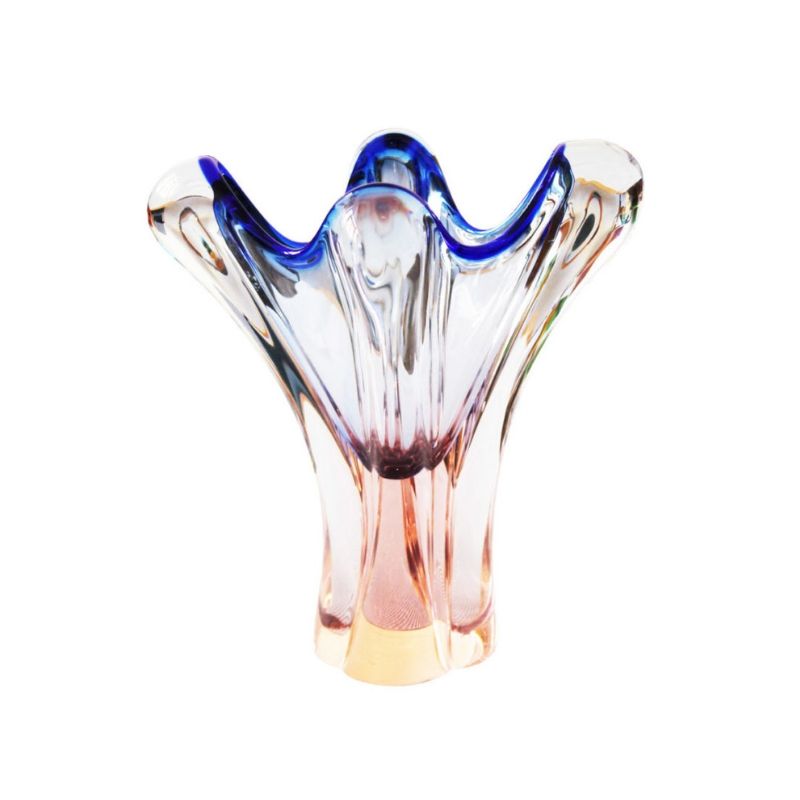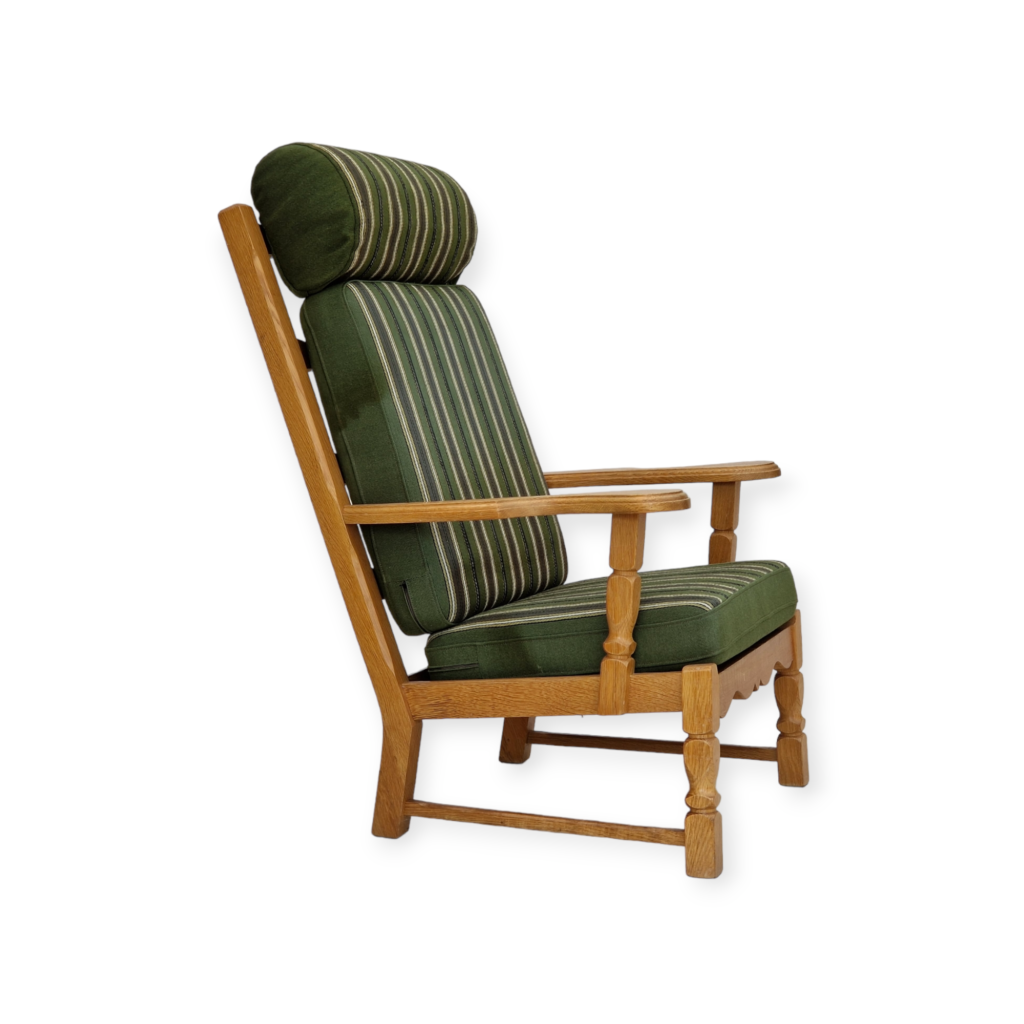This popped up in another thread today. People often add cushions to chairs to make them more comfortable. Sometimes designers add cushions to make chairs more comfortable. Sometimes they're added for looks and sometimes they are essential to the design for whatever reasons. My favorite rocking chair is the J16 by Hans Wegner. I love it unadorned but there's not much lower back support so I just add a pillow. This doesn't cover up much of the back and for me, the back above the arms is what I like best--that subtle fan shape and the slim spindles. And the top of it.I've seen a bunch with an added head cushion. I get why people want this. I'm sure it adds comfort. But for me, it messes with the design too much and I doubt I'd ever add such a thing. Ditto for the one in picture 3---i get the head rest, and I get the seat cushion, too. But DANG, do not cover that beautiful woven seat! I know they are on the firm side of comfort. And maybe it was for some old guy with a bony behind and of course then it is totally warranted. But I feel like the chair has an outfit on that was intended for some other chair...even though it fits beautifully.The other day I saw pics online of a J16 with a thin cushion over the entire back of the chair and another on the seat. It was barely recognizable. I can't find it now, but um....no. Again, i do understand the need for padding. Fortunately no cushions like these alter the chair in any way so there's nothing wrong with using them if you need them. But some of them really detract from the lines of the chair! this chair has an even number of spindles in the back so if you sit square in the chair your spine will not be resting on a spindle. but if you want to turn a bit in the chair to face someone to talk, one of the spindles could end up digging into your back in an annoying way. I've had that happen.The last one is not a J16 but it's very similar. I saw two of these online with the same cushions--the two-part thing on the back and the very thick box cushion on the seat. I would imagine the back cushions are very comfy, as is that thick seat, but both really take away from the chair, imho. There's always the option of a sheepskin draped over the chair back when you're in the chair, and tossed elsewhere when the chair is unoccupied. Sheepskins are great for that kind of thing.
<img class="wpforo-default-image-attachment wpforoimg" src="  | http://d1t1u890k7d3ys.cloudfront.net/cdn/farfuture/CaT4Y1CcABz6S1trhVGnpprp9KyUvb4Z1A
| http://d1t1u890k7d3ys.cloudfront.net/cdn/farfuture/CaT4Y1CcABz6S1trhVGnpprp9KyUvb4Z1A 
I don't think the question should ever be form or function; I'm baffled whenever I see "vs." in between them. Desired function should determine form, and form should be created with regard to its function in order for the design to be successful. Solutions vary widely depending on context.
If it is (or appears to be) either/or instead of both either the definitions of the terms need evaluation, or something else is wrong.
There is no universal truth and nothing is absolute.
Well, yeah, no universal truth---that's obvious and that's why I said several times that I get why people add stuff for comfort's sake. But I am continually astounded by the number of people who value form way more than function (i.e., beautiful but very uncomfortable chairs) and at the other end of the equation, people who completely obliterate form in their quest for comfort.
I'm expressing my opinions here on where the line is for me on this particular chair. SDR brought up the subject in another thread and Leif expressed interest in hearing my opinions in particular, hence this thread.
Plus, it's something that I think about a lot, being in the business of making furniture look as good as possible while maintaining and sometimes enhancing comfort (in ways that don't alter the outward appearance, of course). I am always curious about what it is that makes a chair or sofa comfortable or uncomfortable. Sometimes it's the basic design itself. Sometimes it's the type or amount of padding, or the springs---things that can be improved upon. It doesn't matter what I sit on, whether it's brand new chair in a furniture store or a vintage chair in someone's home--I immediately gauge the feel of it and start pondering what makes it feels that way.
It is a personal choice/preference. Some people prefer lots of cushions/padded surface equating them with comfort, others like me prefer none. My sofa is a tightly clad leather blocks of foam on wood frame called 'Domino' modular seating by Stendig from 1960 and for me adding loose cushions or throws are too distracting. It may appear uncomfortable for others but the feel of seating on an unyielding slab seat works for me.
I also bought a1970's Le Corbusier chaise (by Cassina) in leather and canvas and the original owner ordered it with TWO leather head bolsters for whatever reasons.
Even Ray Eames has her own take on this topic by covering her own design, the Sofa Compact with various blankets, animal hides and pillows to the point it is no longer recognizable.
I am fine with others having more padding and cushions on their iconic seats/chairs as long as it is not one of those pillows with the karate chop thing and it is removable and not fixed to the furniture or altering the design of the piece.
For personal reasons also, the wire chairs I own (eames, bertoia and others), even though they came with full cover seat pads/covers, I prefer them without to fully see their transparency and sculptural shapes.
So, at least in certain cases, you're willing to sacrifice some comfort in order to have the furniture piece look the way you want.
I guess a lot of designers have that priority.
I'd prefer to think (along with spanky) that it's possible and desirable to have one's cake and eat it too. But this is best achieved in the design phase, not in re-thinking an existing chair -- I guess.
minimoma, could it have been that the original owner of your Corbu chaise wanted the two bolsters so they could have one for their head, and one to place behind their knees (similar to the two pillows which come with an Eames chaise) to maximize the comfort while reclining?
And spanky, the cushions (head/ back and seat) on the Hans Olsen rocker that you show are original to the design. So what does it mean when you think it diminishes the aesthetics of the wood chair, but it was the designer's intent and part of the design concept rather than something added after the fact? Just so you know, under the seat cushion is webing attached to a frame to support the seat cushion. There is no wood deck or woven papercord like the Wegner rocker.
Sorry, I did not express that I was raised in the East (Asia) where sitting on the floor with the back straight up and lying down on hard surfaces is typical. This for me is comfort regardless of form.
I don't think I am sacrificing comfort by removing the seat cushions on my wire chairs, I just prefer sitting on firm surfaces and it is not like it will dice the sitter into cubes if removed, and I don't see anything wrong with only acquiring useful pieces that suits me personally.
I don't know why the original owner had a need for two head bolsters on the LC chaise. I use the chaise for myself only without the head bolsters and if I want my feet up, I can adjust the chaise to that up position (as seen in the iconic photo showing Charlotte Perriand lounging in it).
I am not against the use of cushions as I pointed out in the Ray Eames sofa compact example. I applaud her for expressing her own personal taste in her own home regardless of what others called her. I will not stop anyone either if they prefer to cover up a George Nakashima Conoid bench with cushions or other forms of padding if they want to. That is their choice.
How fortunate for you that you are comfortable on firm and unyielding surfaces ! Thanks for that explanation.
I was about to raise the vital issue that different persons -- varying bodies, varying tastes -- require somewhat different seating configurations to satisfy them. This is what makes chair design unique among all the furniture types. Thus, the chair is always a matter of compromise; the designer presumably suits himself when arriving at dimensions and angles.
For me (and for many, apparently) the provision of a back support at the lumbar region -- found approximately at the place where the chair arms are placed, in height, or a little lower -- needs to occur in conjunction with a space below that point on the back which is open -- some "butt room," in other words. (I'm speaking here of the upright sitting position, not the lounging one. And no, I'm not especially endowed, butt-wise ! The lumbar region of the spine is a reverse curve, after all.)
(Minimoma's Asian origin reminds me that Frank Lloyd Wright was a great admirer of things Asian -- and his chairs are often cited as examples of firm and unyielding geometries and materials. This may be only a curious coincidence . . .)
All of this assumes that the back rest will actually be used. Most of us are comfortable, at least for a while, on a backless stool; there is a degree to which the chair back is a psychological aid: it's available for use and therefore a comfort, even when not actually employed. One can hardly dine while leaning against the back of the dining chair !
A book I have, somewhere, on chair design makes the point that many chairs are comfortable upon first use but fail to make space for the inevitable shifting of posture as a sitting session wears on -- a comfortable "second position," in effect. I'd say that the Eames shell is an example of this trait . . .
Pegboard, thanks for your points on the Hans Olsen chair. I had never noticed that chair before this image search. I did figure the cushions were probably original after seeing two different chairs with the exact cushions on each. I looked at them with a mindset of the J16 being the standard of beauty, when of course I should have been more open-minded.
The box cushion still bugs me, though---but I think that is based more on my own experience of seeing box cushions on all kinds of chairs that shouldn't have them. Like the Ib Kofod-Larsen hoop chair I got awhile back. Conventional upholsterers do that because that's what they know how to do, and because people want someting soft to sit on, probably.
What I try to live by is to have chairs and sofas that are comfortable to me without having to add anything to make them that way. I recognize that other people have different requirements for comfort and that still others value appearance over comfort---all of which are fine. I love the look of a Wegner Wishbone chair, for instance, but I don't find them particularly comfortable. But I'm lucky enough to get to look at them in person all the time when I reweave the seats for other people. I like looking at photos of beautiful chairs and sofas that I know aren't my cup of tea comfort-wise. I am just not going to buy any of them for myself. There have been a few times in the past where this was kind of painful to come to terms with, but oh well. That's life. Can't have everything.
Here's my hoop chair with the wrong, wrong cushion style.
If you need any help, please contact us at – info@designaddict.com









